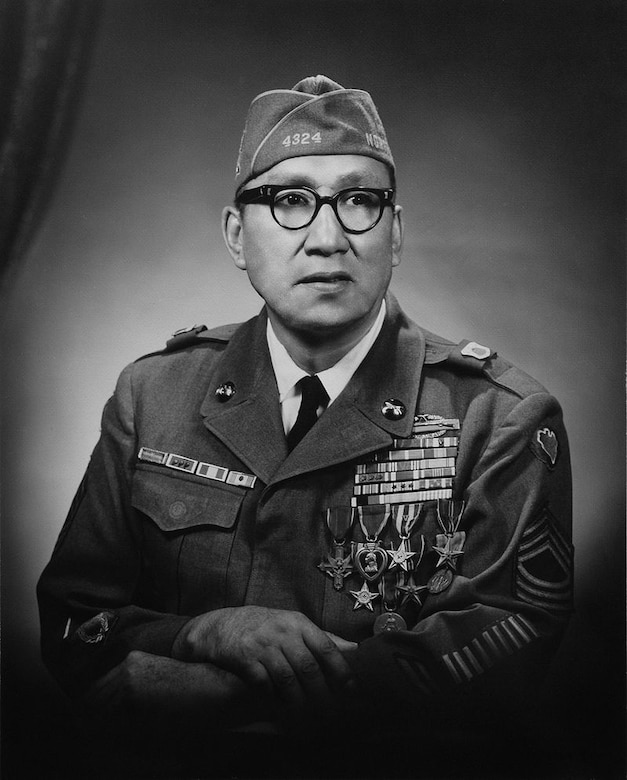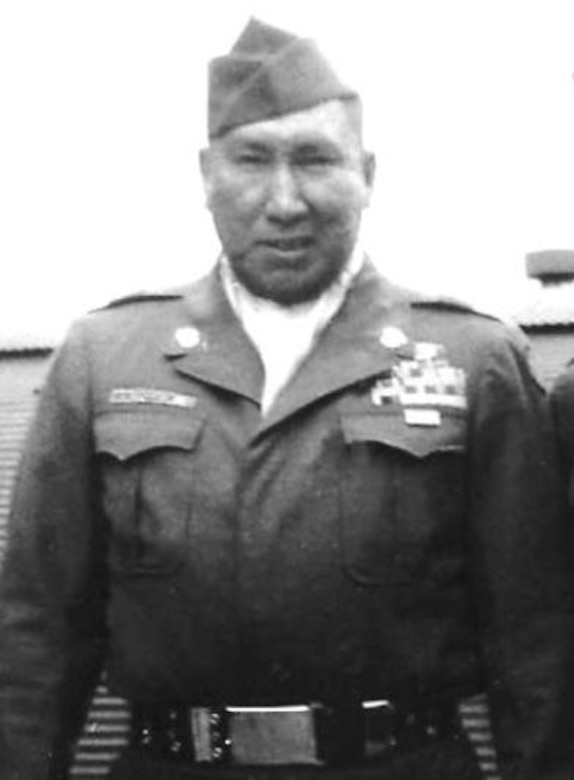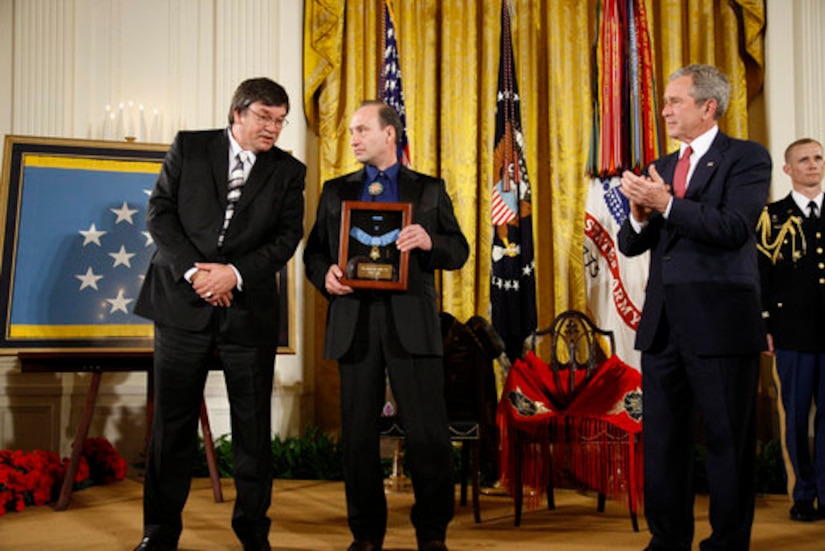June 8, 2021
|
, DOD News
Born in 1917 in Waubay, South Dakota, Woodrow "Woody" Wilson Keeble was a full-blooded member of the Sisseton Wahpeton Oyate of the Lake Traverse Reservation, which straddles North and South Dakota.

A naturally athletic young man, Keeble became an accomplished baseball player. He was so good that the Chicago White Sox recruited him.
However, as fate would have it, World War II broke out, and he enlisted in the Army National Guard and served from 1941 to 1946—the duration of the war and then some.
He served with I Company, North Dakota 164th Infantry Regiment. The 164th landed on Guadalcanal in the South Pacific on Oct. 13, 1942, to backfill for the First Marine Division, which had suffered heavy casualties while clearing the island of Japanese.
Keeble's regiment was the first Army unit to conduct an offensive operation against the enemy in any theater during that war. The division distinguished itself on Guadalcanal, crushing a major Japanese offensive that lasted Oct. 24-27, 1942.

During the offensive, Keeble's reputation for bravery and skill grew, as he put his Browning automatic rifle to good effect and used his strong and accurate pitching arm to hurl grenades with deadly accuracy. James Fenelon, a member of the Standing Rock Sioux Tribe of North and South Dakota who fought with Keeble on Guadalcanal, once remarked, "The safest place to be was right next to Woody."
Later, Keeble and his regiment participated in combat operations on the Southwest Pacific islands of Bougainville, Leyte, Cebu and Mindanao. Following the Japanese surrender in 1945, his regiment took part in the occupation of the Yokohama region of Japan.

Keeble was honorably discharged from the Army on April 11, 1946. He returned to the reservation, having decided to forego a baseball career.
When the 164th Infantry Regiment was reactivated on Jan. 16, 1951, during the Korean War, Keeble once again answered the call to duty. He served in combat in Korea from 1951 to 1952, attaining the rank of master sergeant.
In October 1951, Keeble was wounded four times — on Oct. 15, 17, 18 and 20. For his bravery on Oct. 18, he was awarded a Silver Star Medal. However, his heroism on Oct. 20 made Keeble an even greater legend.

On that day, Keeble single-handedly destroyed three enemy machine-gun bunkers and killed an additional seven enemy soldiers in nearby trenches. For those actions, he was awarded the Distinguished Service Cross, the Army's second highest award for valor.
Keeble was removed from frontline duty to recover from his wounds and was discharged on Aug. 26, 1952. He returned to the reservation and lived there until his death on Jan. 28, 1982.
But that's not the end of his story. His actions on Oct. 20, 1951, were later reviewed by the military and it was decided that his Distinguished Service Cross should be upgraded to the Medal of Honor. President George W. Bush posthumously awarded him the medal on March 3, 2008. Keeble's stepson, Russell Hawkins, accepted the Medal of Honor on his behalf.








No comments:
Post a Comment